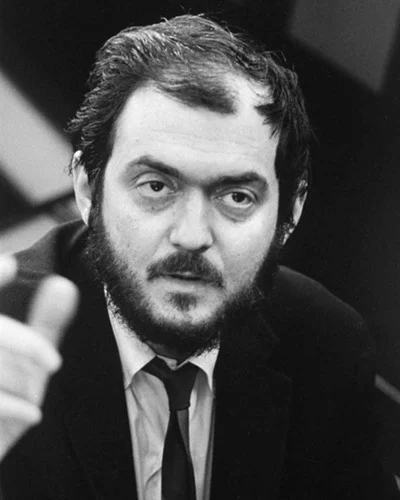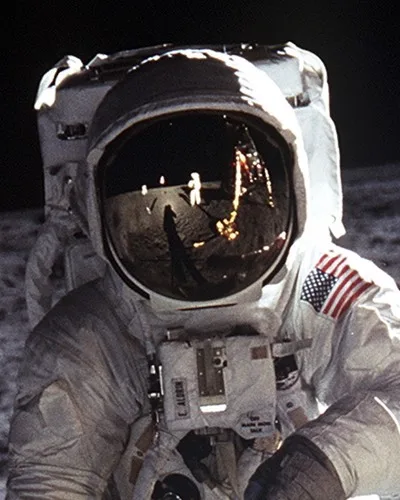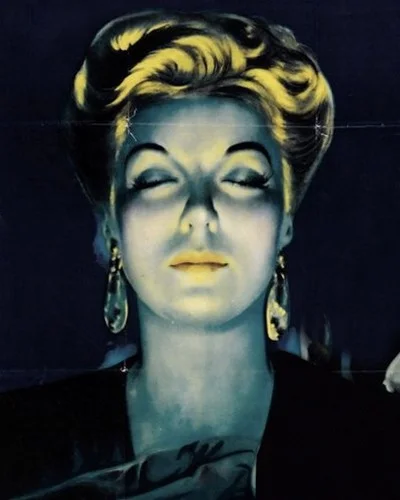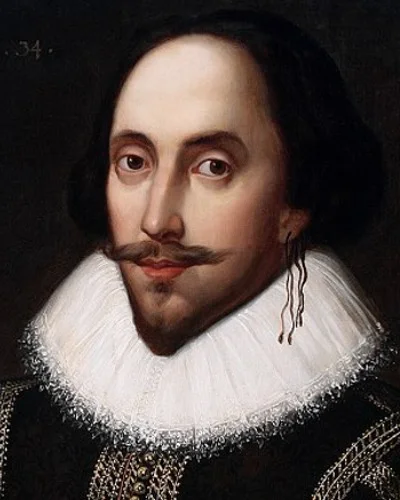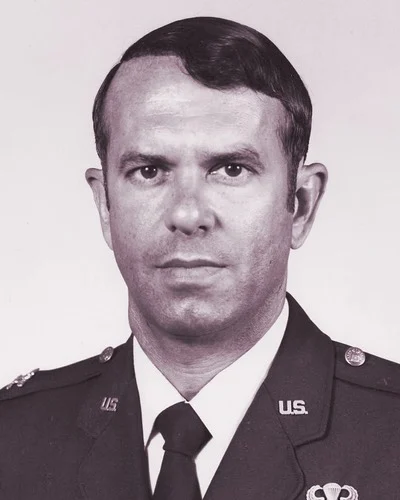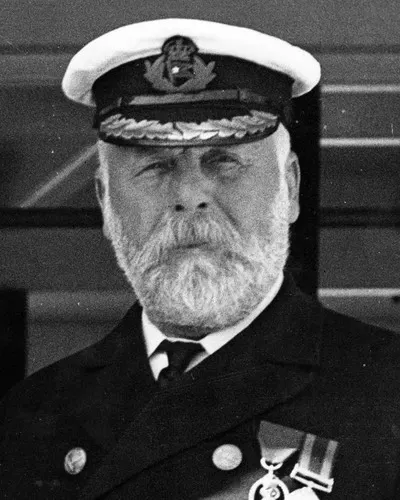The 1960s were strange and heady times for popular culture. Mind-expanding music, films and substances were spawning some crazy ideas, and none were crazier than the story of a legendary musician and the mystery surrounding his true identity.
Paul McCartney has been one of the most famous people in the world for over 50 years. First as one quarter of the greatest pop band in history - the Beatles, then for a successful 40 year solo career featuring a string of hit singles and albums.
The Beatles’ expansive music and surreal lyrics had always inspired theories and speculation amongst their fans, but by the height of their fame in the late 60s a weird rumour was beginning to move from college campuses to the mainstream media; the band's bassist and joint songwriter Paul McCartney was dead.
This came as news to McCartney himself, who in 1969, when the stories of his death reached fever pitch, appeared to be walking around alive and well. But was the man going by that name truly the same Paul McCartney who first charmed filmgoers with his fellow bandmates, John Lennon, Ringo Starr and George Harrison in 1964’s classic A Hard Day's Night?
Was the man walking barefoot across the Abbey Road crossing in the most famous album cover ever produced really the same man who wrote pop classics like I Want to Hold your Hand and Yesterday? Apparently not, as far as the conspiracy went.
The central tenet of the Paul is Dead theory was that sometime in late 1966, McCartney was killed in a tragic car accident. Determined not to end the most profitable and successful band in history, the management drafted in a look-alike to masquerade as the deceased Beatle and keep the moneymaking juggernaut intact.
As weird as it may have sounded, proponents of the theory managed to find dozens of inexplicable references in the Beatles’ songs and album covers following Paul’s supposed demise that appeared to be hinting that something really had happened to the bassist.
Was Sgt Pepper's Lonely Hearts Club Band a coded confession of the truth? Did the Walrus from I Am The Walrus, who John identified as Paul in his song Glass Onion, represent death? And why, if you played the White Album’s track Revolution 9 backwards could you hear the words ‘turn me on dead man?’
Whilst some of the musical analysis looks fanciful, according to believers the photographic evidence clinches their case. The McCartney of the late 60s they argue, of Sgt Pepper and Abbey Road fame, is clearly not the same man of the early and mid 60s, the era of Please Please Me and Help!
Paul certainly does appear to look different in some photographs between these two parts of the 60s, but were these differences merely the natural changes in a young man’s face as he fluctuates in weight and grows older or something more sinister?
Advocates of the Paul is Dead theory maintain that the photographic anomalies are because we are looking at two different men, one the original Paul of the early 60s and the other his replacement, a McCartney look-alike named variously William Campbell, William Shepherd and Billy Shears.
The first rumblings that something may have happened to Paul began in December 1965, when he was involved in a much publicised moped accident whilst visiting his family in Liverpool. The injuries sustained in this crash, especially Paul’s broken tooth, are clearly still evident in the videos for Rain and Paperback Writer filmed in May 1966.
Another accident occurred on the 7th January 1967 when McCartney's black Mini Cooper was written off in a crash on the M1 near London. However, the official story has it that the car was been driven by a student named Mohammed Hadjij at the time, not McCarney.
It seems these two relatively mundane incidents were becoming mangled across multiple retellings, spawning the far more sensational rumour that Paul had actually died in a car accident. Shortly afterwards, Beatles Monthly magazine attempted to quash the gossip by issuing a false report about the latter accident, dismissing any notion that there had been a crash at all, and stating that not only was Paul alive and well but his Mini Cooper car was also perfectly intact.
Was this false story designed to hide the tragic truth that Paul had really died? Whatever the truth, the Beatles’ story always unfolded in fast forward, and the two episodes were quickly forgotten amidst a torrent of other tabloid stories about the exploits of the Fab Four.
Apart from the odd piece of drug fuelled chatter during swinging London parties, the rumours about McCartney did not reemerge again until 1969, when the whole idea that Paul was dead took off in sensational fashion, gaining such credence in the mainstream media that it even spawned an extraordinary mock trial on American television prosecuted by famous attorney F. Lee Bailey.
Much of the initial credit for the Paul is Dead theory belongs to a student at Michigan University called Fred LaBour. LaBour began to write about the idea in late 1969, initially inspired by a program on local radio where a Beatles fan named Tom Zarsky had phoned in claiming not only that Paul McCartney was dead, but that a sinister clue to this was hidden in The White Album track Revolution 9.
Following the callers instructions, the disc jockey at Michigan's WKNR-FM, Russ Gibb, played a portion of the song backwards live on air, stunning his listeners by revealing the apparent secret message ‘Turn me on dead man’.
LaBour’s subsequent article for the Michigan Student newspaper - ‘"McCartney Dead; New Evidence Brought to Light", cemented many of the key facets of the legend. Detailed were Paul's death in a car crash during the recording of Sgt Pepper in late 1966, the clues left in the album covers, the backward messages in the band's songs and the imposter William Shepherd.
From here was born the whole feverish Paul is Dead craze of 1969, which prompted obsessive dormitory analysis of every second of the Beatles music for more clues, much speculation in the press and the aforementioned TV trial of the incredible theory on American TV. Paul himself was even put into the Kafkaesque position of being called out in the national media to prove he was alive.
As is necessary for any good conspiracy, suspicious deaths were also added to the brew, with the untimely early demise of such prominent Beatles related figures as their manager Brian Epstein, roadie Mal Evans and even John Lennon himself all linked to the plot. Where they taken out to prevent them revealing the dark truth about Paul?
Of course most sensible people dismissed all of this as wild nonsense. The band had already admitted to deliberately putting gibberish references in their songs to tease fans and mind bending theories about the increasingly psychedelic and cryptic output of musicians like the Beatles was rife throughout the 60s.
Such outré speculation, critics argue, was the inevitable consequences of fandom and press desperate for any scrap of news about the Beatles. Once the real news ran out the temptation to start inventing new news must have been overwhelming for journalists knowing anything Fab Four related would sell more papers.
Some even suspected the Beatles themselves were behind the rumours, deliberately concocted as a way to bolster album sales. Although as the most successful band in history who continually broke sales records, it doesn't seem like they really needed the extra PR.
Most of the evidence offered up was so subjective and tendentious that it could prove nothing either way. But what of the incredible claims of two Italian forensic scientists, who in 2009 studied photographs of McCartney during the 60s and concluded the man claiming to be the famous musician post 1966 was not the same fresh faced mop top who sang Love Me Do in 1963?
Could the most outlandish of 60s conspiracy theories actually be true? Is Paul Dead?
Evidence For
The Two of Us
Whilst the idea that Paul was replaced with a look-alike sounds like the far-fetched plot of a comic book, there is in fact a long documented history of the use of doubles in politics, espionage and entertainment.
Hitler and Stalin employed multiple doubles, both as a decoy in case of assassination attempts and simply to do the mundane leg work of a busy dictator in the era before mass communications.
Iraqi leader Saddam Hussein took the idea to a new level, routinely utilizing look-alikes to disguise his true whereabouts, especially as his paranoia grew in the aftermath of the 1991 Gulf war. By the time he, or perhaps one his his doppelgangers, was captured by US troops in 2003 it is thought he may have used more than a dozen look-alikes in the preceding decade.
Perhaps the most famous case of a double in modern times involved British WW2 general Bernard ‘Monty’ Montgomery. Solider M.E. Clifton, who bore a strong resemblance to Montgomery, was recruited by British intelligence to act as a decoy for the General.
Clifton then made trips to Gibraltar and Algiers in the guise of Monty, specifically to be seen and trailed by German intelligence so as to mislead them about the Allies invasion plans.
In the sphere of entertainment, impersonator Michael Clayton bore such an uncanny resemblance to comedian and actor Robin Williams that he was able to successfully pose as the star and attend events and gigs using his identity. By 2005 Williams would be forced to sue Clayton in order to stop the deception.
In 1968, hundreds of excited Andy Warhol fans attended his much publicised speaking tour of American universities. What most of them didn't realise until the hoax was exposed after the fact was that it was not Warhol they had payed to see but actor and ‘official double’ Allen Midgett.
In the world of music, a homeless man named Christopher Dickinson successfully passed himself off as former Kiss drummer Peter Criss for a time in the 1990s. Dickinson was living on the streets in Santa Monica when he began claiming to be Criss, convincing a string of prominent celebrities and Kiss fans to rally around and him get back on his feet.
This came as a surprise to the real Peter Criss, living happily with his wife and daughter and somewhat taken aback at the rumours he had fallen on such hard times. Criss would later have a memorably surreal confrontation with his imposter on the Phil Donahue show, where he asserted his bonafides as the genuine Kiss star.
In the light of these and many similar stories, is it really so unlikely that the Paul McCartney we see today is an imposter? Of course such a prospect would far outstrip all other documented example of doubles in history both for its duration and the intense scrutiny it had had to withstand.
This fake Paul is now in his mid-70s, meaning he has spent far longer in the part than the original ever did, all the time as one of the most photographed, filmed and studied men in history. Is there any evidence amongst this vast catalogue of documentary evidence to back up the incredible theory?
I’ve Just Seen a Face
There were many thousands of photographs taken of McCartney during his 1960s heydey in the Beatles. If the rumours that he was replaced with an imposter in 1966 are really true then there must be evidence for it in at least some of these images.
Paul is Dead theorists point to late 1966 and early 1967 as the first appearances of the fake Paul, or ‘Faul’ as they call him. During this time McCartney seems to rapidly lose the round, slightly chubby face he had in the early 60s and sport a longer, slightly gaunter, more angular visage.
Was this too many late nights partying and taking drugs catching up with the singer or an obvious indication that he had been replaced with William Shepherd, a look-alike who was thinner than him? Other details appear to set the two eras of McCartney apart. The 1967 Paul has thinner lips and and a longer thinner nose, as well as flatter less arched eyebrows.
Most tellingly, the latter McCartney seems to sport detached earlobes, whereas the earlier models are attached. Barring some unknown surgical procedure or accident it’s not clear how this could be the case.
Proponents of the theory also point to other photographs showing the 1967 Paul to be noticeably taller than his predecessor. Pictures taken of the singer with his long term girlfriend Jane Asher in 1967 appear to show Paul several inches taller than Asher. Similar side by shots of the pair from before 1967 show Paul to be much closer in height to the actress.
Amateur photo-analysis is, however, a dangerous business. People can look very different in different pictures for a whole variety of entirely natural reasons. Countless other factors such as the lenses, lighting, perspective and cropping can also make a photo look unusual and anomalous.
For this reason, Paul is Dead advocates point to the startling conclusions of two Italian forensic scientists to bolster their claims. In a 2009 Wired Italia article, Francesco Gavazzeni and Gabriella Carlesi conducted a biometric analysis of images taken of the Beatle both before and after 1966 for what was originally intended to be a piece debunking the conspiracy theories.
To their surprise, the scientists found measurements of the shape of the skull and jaw, the curve of the jaw, the ear, palate and teeth displayed marked differences between the Pauls, leading them to conclude with a “high degree of probability” that they were in fact two different men.
“The mandibular curve between the two sets of photos showed a discrepancy of over 6 percent, well beyond the threshold of error. But there was more, before 1966 each side of the jaw is composed of two curves, since 1967 it appears to be a single curve”, the article explained.
Gavazzeni and Carlesi outline several other significant morphological differences in Paul’s lips, eyes, nose and teeth; too many, they say, to be down to the natural fluctuations you would expect between different photos of the same person.
As convincing as this may seem there are some major caveats. Whilst Carlesi is a specialist in craniometry and odontology, Gavazenni is actually a computer scientist with no special qualification in facial anthropology.
Forensic science itself is somewhat of a misnomer, it is not a hard science but a highly subjective one heavily dependent on the interpretation of the individual specialist. Any high profile murder trial will have two teams of forensic experts testifying to often tangentially opposite conclusions based on the same evidence. Clearly, at least 50% of them must be wrong.
Every Little Thing
Of all the evidence offered for the Paul is Dead theory, perhaps what has most captured fans imaginations since 1969 is the analysis of the various clues that appear to be hidden in the Beatles’ music and album covers.
From secret messages that can only be heard when the band’s songs are played backwards to cryptic references in the album covers, theorists have pointed to dozens of subtle and not so subtle hints in the Beatles output that seemed to be suggesting something terrible had happened to Paul.
The first record alleged to feature the replacement McCartney was 1967’s Sgt Pepper's Lonely Hearts Club band, said to contain a plethora of clues and references to original Paul’s recent death.
Much heralded as one of the first successful concept albums, it saw the Beatles taking on the guise of the eponymous Sgt Pepper band. Was this a direct reference to them leaving the ’old’ Beatles, featuring the now dead McCartney behind?
On the album’s cover the ‘new’ Beatles, in their psychedelic outfits, can be seen stood in front of what looks like a grave with the band's name depicted in flowers. Alongside the name is a wreath in the shape of a left handed guitar, the same orientation the original Paul famously played.
Directly below the central figure of Paul is the word ‘HEARTS’ written on a bass drum. When a mirror is placed horizontally dividing this word in half it reads ‘HE♦DIE’. Could this really just be a spooky coincidence or the product of overactive imaginations?
And what to make of the reverse cover of Sgt Pepper, with the image of the four Beatles in their elaborate costumes, with only Paul of the band stood with his back to the viewer? There is no obvious reason why only Paul is singled out like this, but as we shall see, it would become a recurring theme in future releases.
Beyond the cover, Sgt Pepper makes extensive use of studio technology to create complex soundscapes using multi-tracked vocals and backward masking. Whilst it was not uncommon for musicians of the era to use backwards vocals, the Beatles themselves used them before on singles like Rain, fans believes Sgt Pepper marks the start of a whole series of specific references to Paul's death in the band's music.
Does John Lennon's track Strawberry Fields Forever have him backwards singing “cranberry sauce”, as the official biographers tell us, or “I buried Paul” as Paul is Dead theorists maintain?
The closing track A Day in the Life is often regarded as Lennon and McCartney’s finest collaboration, but does the lyric “he blew his mind out in a car”, reference Paul's decapitation in a fatal car crash during the album's recording?
1967 proved to be incredibly fruitful creatively for the Beatles, with or without the real Paul, and their success continued with Magical Mystery Tour later in the year. Originally released as both double EP and Christmas holiday TV special, the surreal, psychedelic work has reaped rich rewards for Paul is Dead proponents in search of more evidence for their theory.
John Lennon's I Am The Walrus, with its nonsense, Lewis Carroll-esque lyrics was always rife for interaction and Paul would quickly become identified by fans with the Walrus of the title. Lennon playfully encouraged such rumours on his follow up track Glass Onion, in which he teases “here’s another clue for you all, the Walrus was Paul”.
It is frequently cited in the Paul is dead conspiracy theories that this was a dark hint about Paul's fate, as walruses are often used as symbols of death in folklore. Whatever the case, Paul became so identified with the animal that he would be invited to play one 20 years later in the video for George Harrison's When We Was Fab.
The video for Paul’s song Your Mother Should Know contains what would become a running theme in the Beatles remaining albums, the singling out of Paul as somehow different to his fellow bandmates. In the video, staged as an old school song and dance number, John, George and Ringo are in tuxedos with a red rose on the lapel. Somewhat incongruously, Paul sports a black rose instead, a flower more closely associated with death.
What's interesting about this particular clue, is that Paul went out of his way to specifically deny it had any significance at all. In a 1969 Life interview he dismisses the strange disparity with a mundane explanation; during filming they had simply run out of red flowers, so he had to use a black one.
For some reason as yet unknown, it looks like Paul is lying about this. McCartney was actually the uncredited director of the entire sequence, in which he is clearly seen been handed a huge bouquet of red flowers, whilst sporting the discordant black flower on his lapel. It could not therefore be a shortage of props as he claimed, only a deliberate choice.
There wasn't much for fans to dissect on the cover of their next release, 1968’s ‘The Beatles’, with its all white cover. But the sprawling double album features several more instances of backwards vocals.
Revolution 9, much mocked as the most skipped song in music history, and perhaps the only track played more often backwards than forwards, seemed to be the rosetta stone of Paul is Dead mythology. Whilst it admittedly takes some imagination to hear, one segment of Revolution 9 played in reverse does sound very much like “turn me on dead man”, which to fans looked like a reference to Paul, who famously sang “I love to turn you on” in A Day in the Life the previous year.
Another song on the album, Lennon’s I'm So Tired, ends with a piece of spoken gibberish that theorists believe says “Paul is dead man, miss him miss him” when played backwards, whilst the rare self penned Ringo effort Don’t Pass Me By has the drummer singing about a lost friend who died in a car crash, just as Paul was said to have done.
Moving on to 1969 the band released Abbey Road, with its iconic Iain Macmillan photograph of the musicians crossing the street near London’s Abbey Road studios. Coinciding, as it did, with the growing rumours about Paul’s death reaching critical mass, fans voraciously scoured the cover for more clues.
As was becoming customary, Paul is again depicted different to the other Beatles, being the only one of the four walking across the road barefoot. Was this, as many suggested, a reference to the traditional practice in many cultures of burying the dead barefoot and another hint from the band that Paul was in fact dead?
Further to the idea, In the background of the shot is a parked VW Beetle car with a number plate containing 28IF. Could this be another hint from the band about Paul, the Beatle who died in a car crash and would have been in his 28th year if he had lived?
To complete the theme of death, Macmillan frames the men in way that resembles a funeral procession, with Ringo even dressed uncannily like an undertaker for added measure.
The album cover of Let it Be, the band’s final release in 1970, again singles out Paul for special attention. Whilst John, George and Ringo are all looking leftwards on a white background, Paul is staring directly at the viewer, framed by a red backdrop. Is this yet another reference to the bloody demise of the original McCartney in 1966?
Many Beatles fans love to play armchair detective about all of this, without ever really believing it. Beyond treating the musicians’ output as a series of puzzles to be solved, how credible was the scenario really?
If Paul had been killed in an accident could they have replaced him with someone who not only looked just like him but had the same musical talent? Was there such a man waiting in the Wings, ready to take over and pass himself off as the real Paul?
Well here’s another clue for you all. In the early 60s, it was common for session musicians to exploit popular acts by quickly recording cover versions of their songs and releasing them in the guise of fake bands. The Beatles, with their massive international success, suffered from this more than anyone.
One such fake band, the intriguingly named Billy and the Pepperpots, released a couple of Merseymania albums in 1964, three years before Sgt Pepper. The albums were a mix of Beatles covers and Beatles-esque original songs. The author of these original songs? One Bill Shepherd.
Evidence Against
Magical Mystery Tour
Although now chiefly associated with the internet, the phenomenon of fake news and celebrity death hoaxes is by no means new, with classic era stars as diverse as Charlie Chaplin, Frank Sinatra and Doris Day subject to unfounded reports of their death at one time or another.
In 1966, the year the first Paul is Dead whispers emerged, his contemporary Bob Dylan was at the centre of a very similar story that he had died in an horrific motorbike crash and replaced with a imposter less critical of US involvement in Vietnam.
The origins of many of these rumours are obscure, if not a mix of garbled misreporting and chinese whispers then perhaps somebody's idea of a joke. And in almost all cases they quickly fizzled out after it became apparent the star in question was indeed alive and well.
What sets Paul is Dead apart is how enduring it has proven to be, even today subject of hundreds of youtube videos and internet articles, many of them produced by people who weren't even born when the speculation first spread like wildfire through college campuses in 1969.
Crucially, it also differs from most of the earlier rumours by having a very clear provenance. We can trace most of the Paul is Dead stories back to their source, and by doing see an obvious urban legend being constructed.
The canonical version of the story, that during the recording of Sgt Pepper in late 1966 Paul McCartney died in a car crash and was replaced by a look-alike, was largely made up by a 21 year-old student journalist at Michigan University called Fred LaBour.
LaBour had been amused by talk on local radio about supposed backward messages hidden on the Beatles records and decided, as a creative exercise, to run with the idea and spin out the whole incredible tale.
Little did he know what he had intended to be a joke would become one of the greatest conspiracy fables of all time. Most of the purported facts in LaBour’s October 14th Michigan Daily news article weren't even rumours he heard, but things he simply invented to add more colour to his article.
It was LaBour who devised the idea of a look-alike named William Campbell (Shepherd in other versions of the story) replacing McCartney, and LaBour who invented the much repeated idea that the Walrus, as in ‘The Walrus was Paul’ is a Greek symbol for death. Outside of the writer's imagination, it isn't.
The young writer was astonished when his little spoof quickly exploded out of the confines of his student paper and started being covered as a serious story by national media giants like Time and Life. LaBour had inadvertently created a monster, which was now trampling its way around the global press.
As the frenzy erupted, LaBour was invited onto the RKO TV special in which the theory was subjected to a mock trial led by lawyer F. Lee Bailey, but by this point he had become somewhat daunted by how his joke had seemingly taken on a life of its own.
“I told Bailey during our pre-show meeting that I’d made the whole thing up”, LaBour told Michigan Today in 2009. “He sighed, and said, ‘Well, we have an hour of television to do. You’re going to have to go along with this.’ I said OK.”
LaBour remains philosophical about the fact many of the things he’d made up as a college student 50 years ago are now reported on the internet as fact. “Like it or not, the rumor will be with us as long as the Beatles are with us.”
All four of the Beatles repeatedly rubbished any idea that had put these secret references in their albums, putting it down to the overactive imagination of their fans. Paul himself still has to regularly field questions about whether he is dead or not, including an appearance on the Letterman Show in 2009 where he laughed off the theory as down to “the fame and the craziness”.
Lennon, whose lyrics are central to many of the Paul is Dead theories, admitted on many occasions he was simply making it all up. “I threw the line in - the Walrus was Paul - just to confuse everybody a bit more”, he explained in a 1980 interview with Playboy. “I was having a laugh because there'd been so much gobbledygook about Pepper - play it backwards and you stand on your head and all that.”
Some of the Beatles’ own denials might best be taken with a pinch of salt, however. John is also on the record as saying his Sgt Pepper track Lucy in the Sky with Diamonds had nothing to do with LSD, despite its initials spelling out the word and its content sounding decidedly influenced by the drug.
Do You Want to Know a Secret
It's difficult to imagine a more unlikely place to keep a secret than the music scene of the late 60s, especially one as mind-boggling audacious and elaborate as switching one of the world's most famous men with a double.
Unlike the other three Beatles, Paul spent the height of the Swinging Sixties living in central London, and was a regular fixture at hundreds of nightclubs, concerts and art happenings. During this time his social and professional circle was vast, from a plethora of other musicians, celebrities and artists, to countless peripheral associates and hangers on.
Despite the near endless supply of words written by those who had a brush with the various Beatles during this time, not a single person has ever come forward with any suspicions that McCartney was anyone other than who he was claiming to be. Not even those that saw him virtually every day for years; friends, family or professional colleagues has ever vouched the slightest suspicion that the person they knew well had suddenly become someone else.
Anyone who genuinely knew McCartney and suspected the switch would be assured vast sums of money from the tabloid press for their story, many before them had for far less sensational tales of the Fab Four, yet nobody ever did.
It would take some immensely complex operation, involving thousands of people under lifetime secrecy agreements for the conspiracy to still be intact today, and to what end? The Beatles broke up nearly 50 year ago, a beloved part of our popular culture but no longer any kind of active outfit. What difference would it make now if it came out they replaced their bassist with a look-alike in 1966?
There is, however, a far more sinister variation on the conspiracy theory. Is the continued cover-up about Paul’s death because it was a psyop of some kind, perhaps designed to steer our popular culture in a certain direction or shape young people's attitudes to drugs?
If that is the case then the abilities of the dark forces that create our reality are all encompassing. If they can replace prominent public figures and keep an airtight cover-up about it for 50 years, then it is a truly scary prospect as to what else they might be doing to manipulate our perceptions of the world.
Maybe I’m Amazed
There aren't many artists in popular music who could rip through a throat shredding rock and roll song like She’s A Woman as well as Paul McCartney. Fewer still had the vocal delicacy to do justice to love songs like Here, There and Everywhere. And how many could also have written those songs?
Both were recorded before Paul’s alleged death in November 1966 and are regarded as classics of popular music. This Paul’s skills as a vocalists, writer and multi instrumentalist are widely heralded.
It was always the most fantastical part of the whole theory that the conspirators were able to produce someone who not only looked exactly the same as the now deceased McCartney, but improbably possessed the same high level of musical talent as well.
If Paul really is dead, then the man belting out the later Beatles tracks, like the rip roaring Oh Darling from Abbey Road, or whose lilting vocals lent Hey Jude and Let It Be so much of their power, is at least his equal. Paul’s highly distinctive bass playing, so influential on generations of subsequent musicians, is also perfectly mimicked by his replacement.
Do you need to be a Beatles fan to appreciate how absurd this is? Everyone who ever fell in love with the band, from those giddy early days in 1963 to their bitter breakup in 1970, feels like they know the Fab Four like family. Almost every second of their lives in that seven years of concentrated fame was recorded on film or record for us to endlessly analyse.
Beyond the inherent far out nature of the Paul is Dead theory, true fans know in the hearts that the Paul of She Loves You and a Hard Day’s Night is the same Paul of Let It Be and Maybe I’m Amazed. It doesn't matter what esoteric references and obscure clues appear on the internet.
The personality, the music, the voice, it’s undoubtedly the same man. To entertain the idea that it’s an uncanny double is to enter a far more surreal world than anything the Beatles themselves conjured up even at the height of their psychedelic period.
The Beatles themselves often reflected on the metaphysical, and thats a suitable place to end this magical mystery tour. Whoever the man who continues, in his mid 70s, to entertain millions of people around the world in exhausting three hour concerts is the real Paul in any sense that really matters.
At one McCartney concert during his US tour of 2002, a man in his 40s can be seen openly weeping at Paul’s brilliant rendition of All My Loving, a song he wrote way back as a 21 year old in 1963. Like all great music, it had triggered evocative memories of this man’s past, his loves both present and lost. This is what Paul’s music means to millions of people around the world.
There is nothing fake about the man’s tears, nor McCartney's performance. The singer's voice may now be diminished by age, but what remains so beguiling about McCartney’s music is the fact we know this still vital old man before us is the same bright light that lit up the world all those years ago in the dark days following the assassination of President Kennedy.
Paul Is Dead? Not at all. Paul is very much still alive, and like all the Beatles living and dead, he always will be.
Was Beatles legend Paul McCartney killed in 1966 and replaced with a look-alike? - add your comment below























